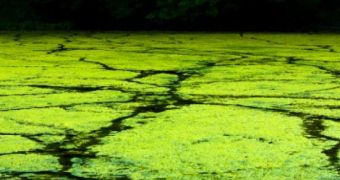Although those who are in the business of producing biofuel regard genetically engineered algae as a valuable source of energy, two scientists now argue that certain risks associated with tampering with these organisms need be given due consideration.
Thus, they warn that having genetically engineered algae released into natural ecosystems might negatively impact on the latter, which is why further research is needed so as to pin-down the environmental risks posed by these modified organisms.
The study Allison Snow from the Ohio State University, and Val Smith from the University of Kansas co-authored on this topic raises two very important questions.
First of all, should genetically engineered algae be allowed to grow in natural habitats, is it possible for them to thrive, or can they only survive under very specific laboratory conditions?
Secondly, provided that these new types of algae do in fact manage to become prolific in the natural world, how can they be expected to influence and transform ecosystems?
E! Science reports that lead-author Allison Snow argued how, “If they can survive, we also need to know whether some types of genetically engineered blue-green algae, for example, could produce toxins or harmful algal blooms - or both.”
Moreover, the case is made that, once coming in contact with other species, these genetically engineered algae might transfer some of their genes to the former, this being a phenomena which is bound to upset natural balance.
The two researchers explain that these risks highlighted by them in their study, which has only recently been published in the journal BioScience, need be kept well in view by those companies that are using or plan on using genetically engineered algae to make biofuels.
Thus, said companies should ask for scientists to assist them, at least in the beginning of their work.
“The applications are new and the organisms are less well-known. They range from being very tame 'lab rats' that won't survive in nature to wild organisms that can presumably cross with each other unless some measures are taken to prevent crossing. It's a very new situation,” emphasized Allison Snow.

 14 DAY TRIAL //
14 DAY TRIAL //